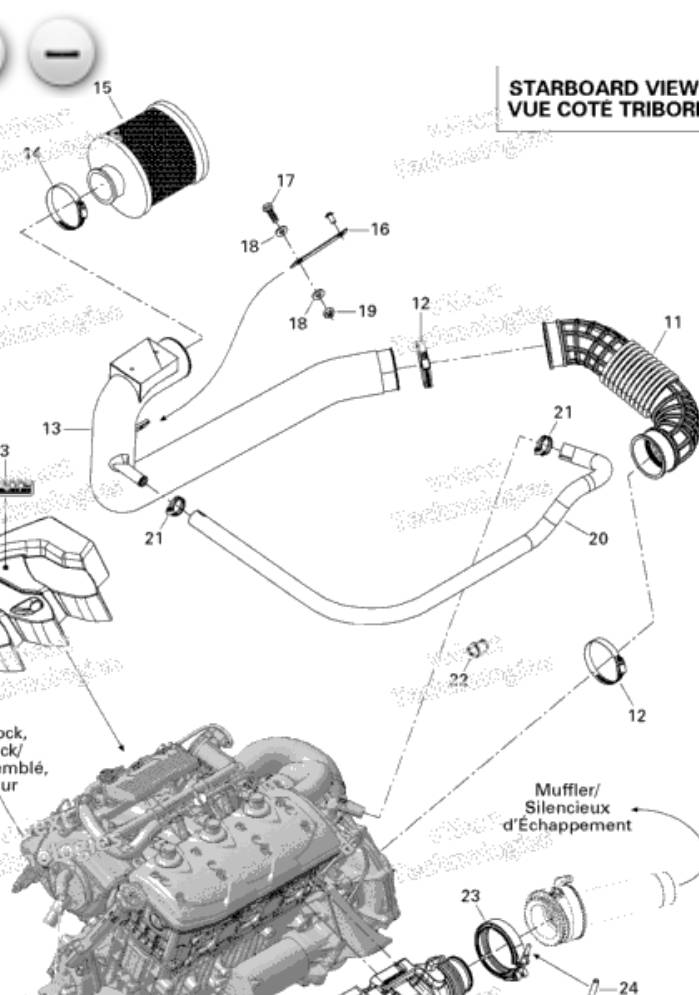anthonymsaad
Active Member
I have a 2012 Challenger 210 430hp. I noticed on the other engine variants that they have air filters, while the 215hp engines have an air intake silencer. Not entirely sure where air enters, even reading the shop diagram, but also know there isn't any filters. That said, I'm not sure is there is some way debris isn't sucked into the engine, acting similar to an air filter.
If there isn't much filtration done on the engine, I would like to look into installing some sort of air filter. I trailer my boat everywhere and, on occasion, I have drove down some streets with construction and through a plume of debris. Not sure how much got pulled inside the engine compartment through the side air inlets, but I don't have much of a way to get rid of them. Additionally, I am trying to find a way to fabricate some inserts for the side air inlets, similar to fighter jets as in the attached picture. Still working on how to secure them in there and to the boat, in the even they fell out, but just throwing out suggestions.
Curious to know if anyone else ever thought about this or figured out a way to protect the engine compartment from not accumulating debris when not in use?
If there isn't much filtration done on the engine, I would like to look into installing some sort of air filter. I trailer my boat everywhere and, on occasion, I have drove down some streets with construction and through a plume of debris. Not sure how much got pulled inside the engine compartment through the side air inlets, but I don't have much of a way to get rid of them. Additionally, I am trying to find a way to fabricate some inserts for the side air inlets, similar to fighter jets as in the attached picture. Still working on how to secure them in there and to the boat, in the even they fell out, but just throwing out suggestions.
Curious to know if anyone else ever thought about this or figured out a way to protect the engine compartment from not accumulating debris when not in use?







